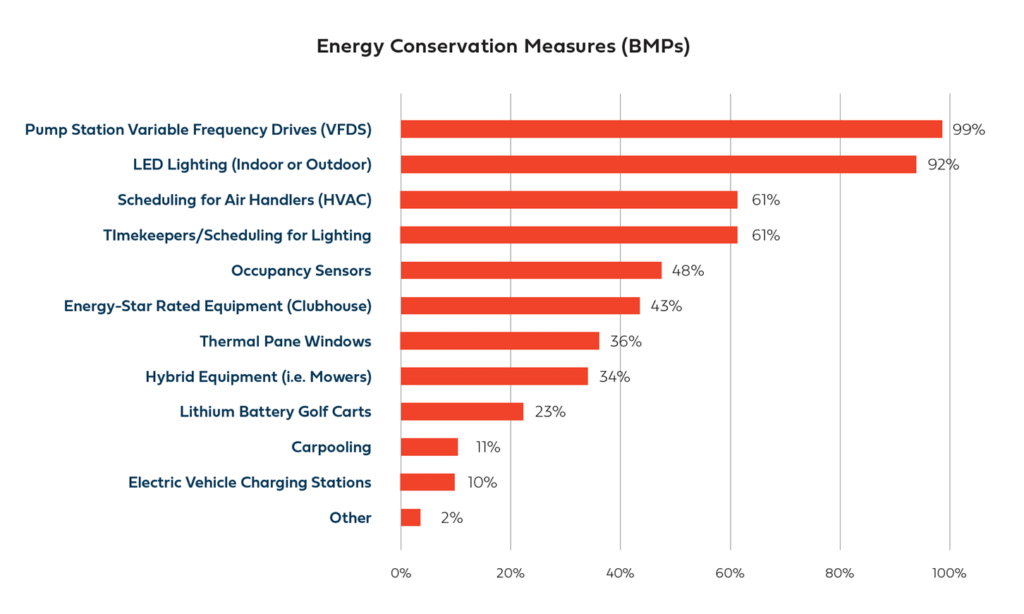How Colorado Golf Is Making Strides Toward Energy Conservation
INSIGHTS FROM THE ROCKY MOUNTAIN GOLF COURSE SUPERINTENDENTS ASSOCIATION
Colorado golf courses are taking proactive measures to reduce energy consumption and numerous courses have moved into onsite solar production. Turf maintenance accounts for 47 percent of energy consumed at a golf facility, with the total facility usage encompassing clubhouses, swimming pools, tennis courts, and various other operations, according to research by the Golf Course Superintendents Association of America, Golf Course Environmental Profile, Phase II, Vol. V (GCSAA 2017). In the recent Colorado Golf Economic & Environmental Impact Report it is shown that there are six major energy sources for golf courses: electricity, gasoline, diesel, natural gas, propane, and heating oil. Colorado golf courses optimize energy use with a mix of these six energy sources, in addition to solar energy.
In 2019, Colorado ranked 12th nationwide for solar power-generating capacity with more than 1,300 megawatts installed and 25 percent of net electricity generation coming from renewable sources. The governor of Colorado proposed a plan that same year for 100 percent of the state’s electricity generation to come from renewable sources by 2040. Colorado golf courses are making strides toward renewable energy with 13 percent of golf courses in Colorado reporting onsite solar energy production in 2018.
Many Colorado golf courses have implemented Best Management Practices (BMPs) to drive behaviors and processes, improve energy efficiencies, encourage optimal design, support innovative solutions, and promote education. Reductions in energy use align with state initiatives, support overall environmental stewardship, and promote sustainable operations.

COLORADO GOLF COURSES: ENERGY CONSERVATION BMPs
Radius Sports Group, a sustainability consulting firm, conducted a study amongst golf facility operators in Colorado to gather inputs that would assist in providing an understanding of the golf industry’s environmental impact in the state. The research found that top energy conservation efforts being implemented in Colorado include:
- 99% of golf courses implement the use of Variable Frequency Drives (VFDs) in Pump Stations.
- 92% of golf courses utilize indoor and outdoor LED lighting.
- 88% of golf courses are using at least four different energy sources
- 56% of respondents have at least five or more energy conservation measures in place.
- 100% of respondents have implemented two or more of the energy conservation efforts.
- 22% of golf courses utilize lithium-ion battery golf carts and 31% are planning to add them in less than five years to help reduce their environmental footprint.

Benefits of Lithium-Ion Battery Golf Carts:
- They charge in 2-3 hours versus 8-10 hours charging time for traditional lead-acid batteries
- They last 3x-5x longer than traditional golf cart batteries.
- They reduce the weight of the cart by 500lbs, making them more efficient.
- They do not require maintenance such as the adding of water, cleaning and corrosion, or checking of acid levels.
Colorado golf is committed to energy conservation. Our governor has laid out an ambitious plan for our state to reduce our carbon footprint and Colorado golf superintendents are leading the way through implementation of BMPs for energy conservation.

For more on Colorado golf industry BMPs related to energy conservation, visit https://rmgcsa.org/CO_BMP_Guide_E-magazine.










